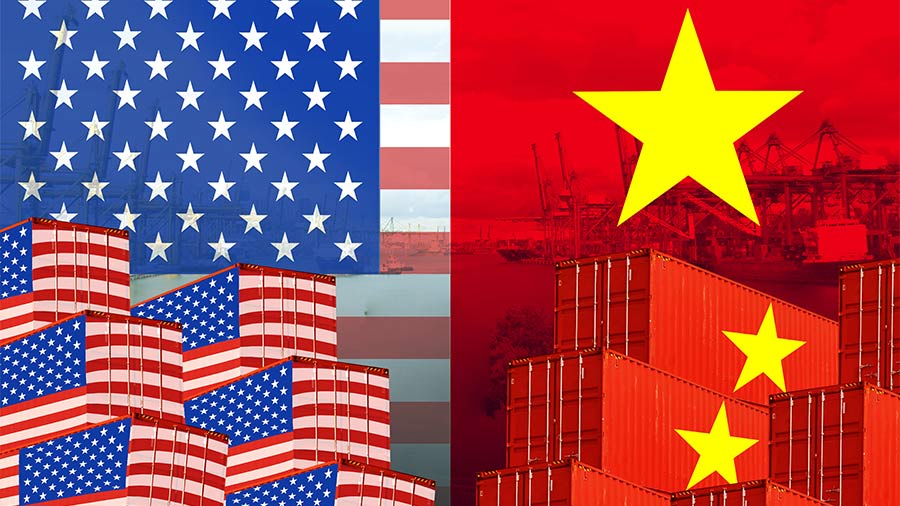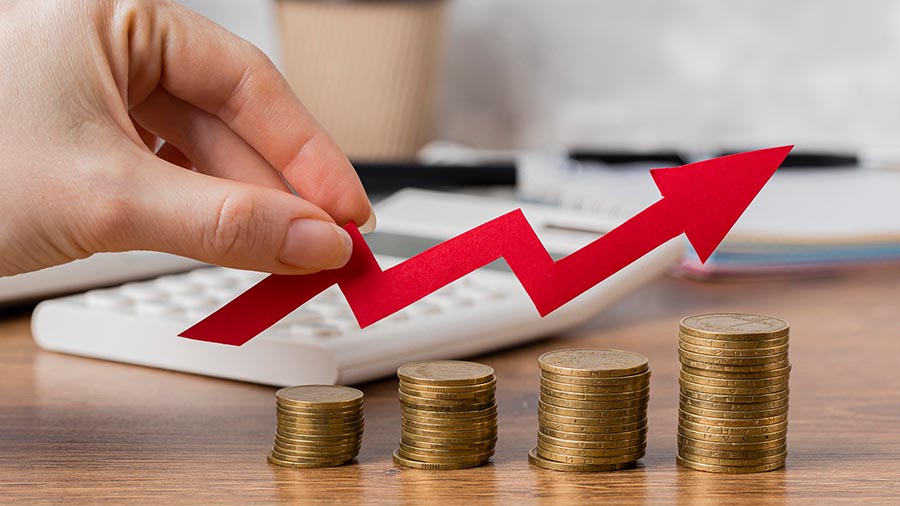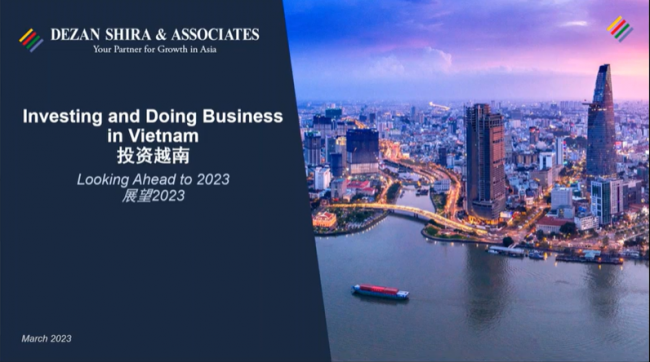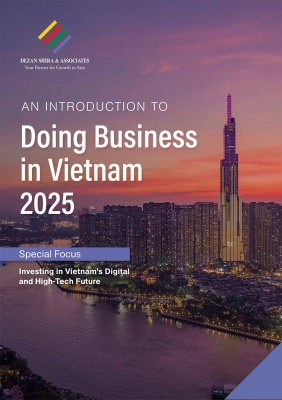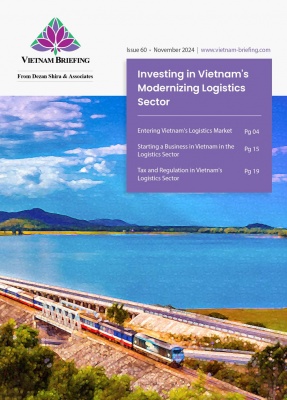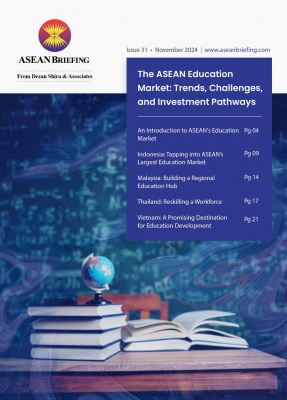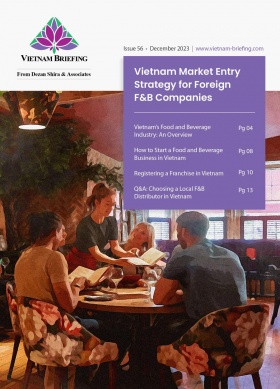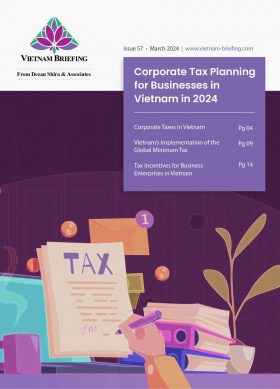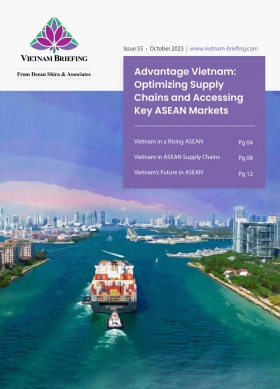Vietnam Calls for Chinese Support in Advancing Rail Projects
The Vietnam government is seeking more Chinese investments and technological support in advancing national and cross-border rail projects, which will both reduce logistics costs and provide effective public transportation.
Vietnam seeks China’s help in railway construction and modernization
On June 24, Vietnam Prime Minister Pham Minh Chinh asked Chinese businesses to invest in developing the country’s rail sector. He noted that Vietnam had yet to fully utilize its rail system, which includes over 2,000 kilometers of rail and 300 stations. Chinh stressed the urgent need for technology transfers and human resource training to improve the sector.
Vietnam’s PM stated this request at a meeting with Chinese rail and energy industry executives at the June 24 to 27 World Economic Forum (WEF) Dalian Summit.
Talking with Sun Rongkun, chairman of Dalian Locomotive and Rolling Stock Co (DLoco), PM Chinh reiterated the Vietnam government’s determination to advance its country’s railway networks as an affordable transport option for commuters and proposed cooperating with DLoco.
In response, Sun informed the PM of DLoco’s keen interest in partnering with Vietnam to produce rolling stocks and to facilitate technology transfers. State-owned energy firm PowerChina echoed this interest, also expressing willingness to participate in Vietnam’s urban rail and energy projects.
Vietnam and China signed a joint statement in December last year, committing to uphold their Comprehensive Strategic Cooperative Partnership and establish a cross-border railway.
The latest talks between Vietnam’s authorities and Chinese firms show that the scope for collaboration continues to expand as both countries remain keen to deepen cross-border ties.
Key rail projects highlighted
At a separate meeting with Lou Qiliang, chairman of China Railway Signal & Communication Corporation (CRSC), in Dalian on June 25, the PM once again sought Chinese assistance in design, construction, and technology transfers for three railway projects:
- Yunnan – Lao Cai – Hai Phong;
- Lang Son – Ha Noi; and
- Dongxing (Guangxi province) – Mong Cai – Hai Phong.
The three rail projects spanning 700 kilometers are critical in promoting trade between Vietnam and China.
During the same meeting, Vietnam’s Minister of Transport, Nguyen Van Thang, discussed the country’s plan to build the North-South High-Speed Railway. The line will be over 1,500 kilometers long and is projected to start before 2030. It is a state priority and is expected to create up to 332,300 jobs during construction, as well as employ 14,000 workers once operational.
The minister sought China’s assistance in railway construction, rolling stock manufacturing, and signal system setup, while acknowledging the country’s expertise in these fields and its competitive prices.
The Railway Project Management Unit (Vietnam Railways) of the Vietnam Ministry of Transport (MT) listed seven key national railway projects in 2024:
- The North-South High-speed route;
- The Lao Cai – Ha Noi – Hai Phong route;
- The Ho Chi Minh City – Can Tho route;
- The Thu Thiem – Long Thanh route;
- The Bien Hoa – Vung Tau route;
- The Ngoc Hoi – Lac Dao route; and
- The Yen Vien – Lao Cai route.
Vietnam’s aging railway systems have long awaited investments to transform and improve connectivity linkages for commercial logistics and offer affordable and reliable public transportation.
Upgrading existing Vietnam-China rail links
According to a Ministry of Planning and Investment’s (MPI) statement on April 9, Vietnam plans to begin work on two high-speed rail routes connecting it with China by 2030. Both will be part of the North-South High-speed Railway, which links Hanoi with the bustling business center of Ho Chi Minh City.
Highways and two old railway lines enable ground transportation between the two countries. One rail route is the Hanoi-Pingxiang-Nanning line, built in 1940, and the other is the Lao Cai – Kunming (Yunnan province) line, first constructed by the French in the early 20th century.
Looking forward, the cross-border projects in tandem with the North-South High-Speed rail route will contribute to bilateral commercial exchanges and regional trade connectivity.
Read more: Vietnam-China Trade: Transport Ministry Proposes Update to Railway Link.
Demand for lowering logistics costs
China, which is the world’s second-largest economy, is Vietnam’s largest trading partner and a crucial source of imports for its manufacturing sector.
According to data from Vietnam’s government, Vietnam-China trade grew 22 percent yearly to US$43.6 billion in the first quarter of 2024. It’s now reaching the US$100-billion threshold for the first six months of this year, per reporting in the Vietnamnet Global.
Last year, the Railway Transport and Trading Joint Stock Company (Ratraco) said that Vietnam was working to boost agricultural exports to China via railroad due to the rising demand, especially for fresh fruits like durians, watermelons, coconuts, and bananas and seafood.
Sea freight is a typical means of transport for many Vietnamese agricultural products to China, but it is not a viable option for fresh fruits as the shipping time is longer than the produce’s shelf life. Fresh fruits can only last for 25-27 days starting from their harvest day.
Rail transport is a less time-consuming option and is thus less costly.
A part of the broader Belt and Road Initiative
The North-South High-Speed Railway project is considered an ambitious initiative with a projected cost of up to US$72 billion. Vietnam has traditionally relied on Japanese expertise for such kinds of projects, but a recent pivot to China implies a strategic shift in regional trade dynamics.
Vietnamese authorities have been seeking both technological and financial support from China. An array of cooperation agreements, signed during Chinese President Xi Jinping’s visit to Hanoi last December, demonstrate strong trade and commercial partnerships between Vietnam and China.
Looking at the larger context, the bilateral collaboration in railway projects is part of a larger infrastructure scheme under China’s Belt and Road Initiative (BRI), which attempts to establish linkages between China and its regional partners.
Vietnam is not alone since its Southeast Asian counterparts also participate in the BRI’s railway schemes:
- The semi-high-speed Laos-China railway, opened to passengers in 2021, connects Kunming, a commercial hub in southwestern China, to the Laos capital, Vientiane. The line is about 1,000 kilometers long, and the whole journey takes around 10 hours.
- The project to connect Bangkok (Thailand) to Laos-China: Despite delays and mounting construction costs, work on the line is now underway and expected to be in operation by 2028.
- China aims to further extend the line into the capital of Kuala Lumpur in northern Malaysia and end it in Singapore.
- The Jakarta-Bandung High-speed Railway is the first China-backed project of its kind in Southeast Asia. The Indonesian project launched in October 2023.
Qian Zhou, Associate Managing Editor, Asia Briefing, comments on the potential collaboration between Vietnam and China.
Zhou notes that cooperation with Vietnam on high-speed rail construction has several positive implications for China:
- International promotion of technology and management experience: China has rich experience in high-speed rail technology innovation, engineering implementation, and operational management. By participating in Vietnam’s high-speed rail construction, China can showcase the advanced and reliable nature of its high-speed rail technology to the world, further supporting its “going global” strategy. This enhances China’s competitiveness and influence in the international high-speed rail market.
- Promoting economic cooperation between China and Vietnam: High-speed rail construction is a massive system project involving multiple fields and industries. Cooperation between China and Vietnam in this area will facilitate exchanges and collaboration in economics, technology, and management, strengthening bilateral trade relations. Additionally, this collaboration helps China expand its overseas market and promote related industries.
- Enhancing regional connectivity: High-speed rail serves as modern transportation infrastructure that plays a crucial role in regional connectivity and economic integration. The rail link between China and Vietnam will shorten the distance between the two countries, facilitating travel for people and goods and deepening cooperation in trade and investment.
However, it is also important to note that any international project must fully consider the interests and practical needs of all involved parties to ensure the feasibility and sustainability of the project. Therefore, whether China and Vietnam can successfully collaborate on high-speed rail construction depends on effective communication, coordination, and long-term development efforts from both sides.
Conclusion
Vietnam’s authorities currently view China as a strategic source of funding, expertise, and technology for its attempts to modernize and expand its existing rail infrastructure.
The proposed multi-stakeholder collaboration among experts, businesses, and authorities, on the railway projects is expected to benefit both Vietnam and China, as the two countries commit to enhancing the infrastructure to facilitate regional travel and trade. The BRI investment will not just bolster Vietnam’s regional linkage networks with China but also its Southeast Asian partners.
About Us
Vietnam Briefing is published by Asia Briefing, a subsidiary of Dezan Shira & Associates. We produce material for foreign investors throughout Asia, including ASEAN, China, and India. For editorial matters, contact us here and for a complimentary subscription to our products, please click here. For assistance with investments into Vietnam, please contact us at vietnam@dezshira.com or visit us at www.dezshira.com.
Dezan Shira & Associates assists foreign investors throughout Asia from offices across the world, including in Hanoi, Ho Chi Minh City, and Da Nang. We also maintain offices or have alliance partners assisting foreign investors in China, Hong Kong SAR, Dubai (UAE), Indonesia, Singapore, Philippines, Malaysia, Thailand, Bangladesh, Italy, Germany, the United States, and Australia.
- Previous Article Vietnam Considers Raising Excise Tax for Alcohol, Sweetened Beverages, Tobacco
- Next Article Vietnam Considers E-Invoicing for Livestream Sales: Advisory for Businesses
